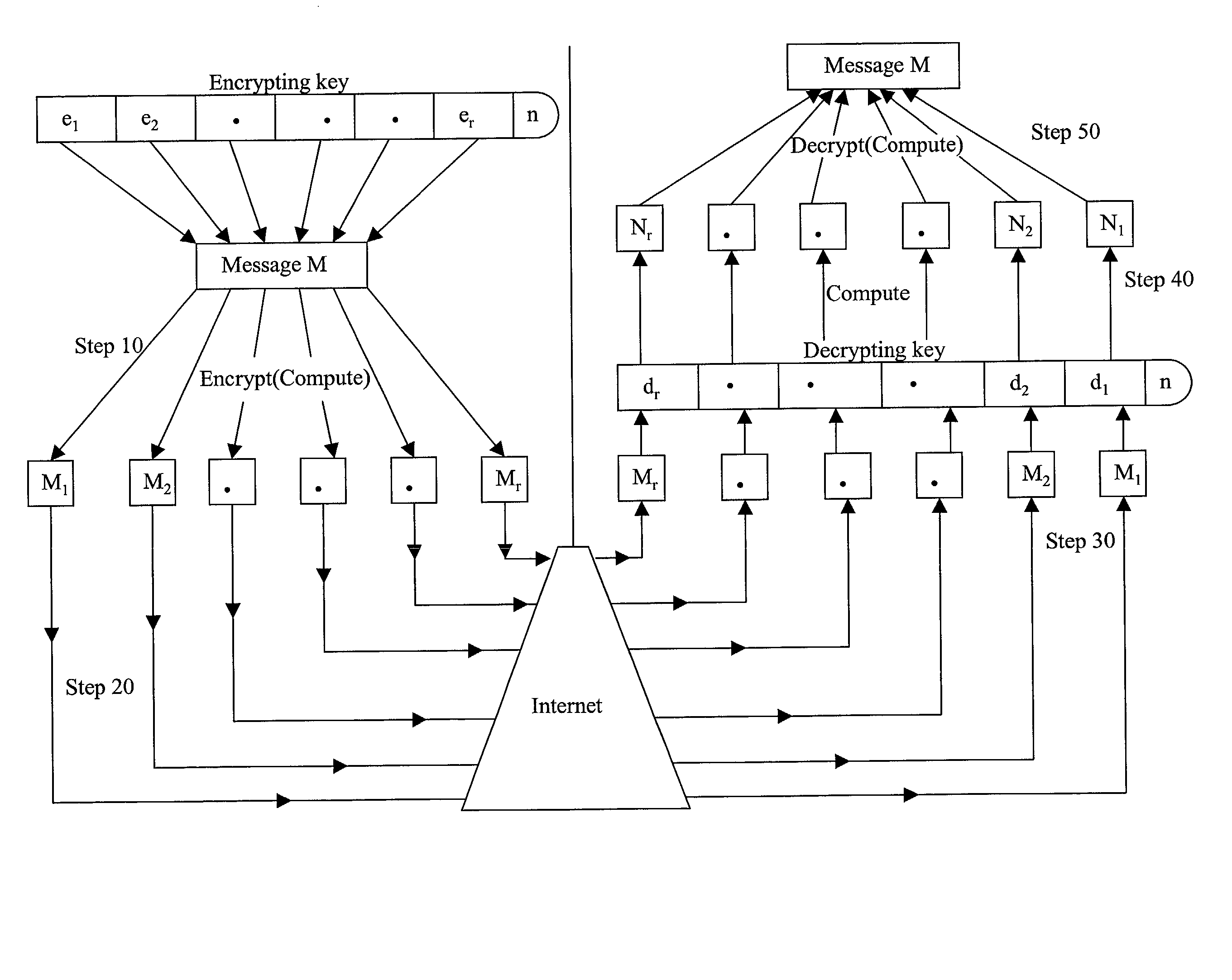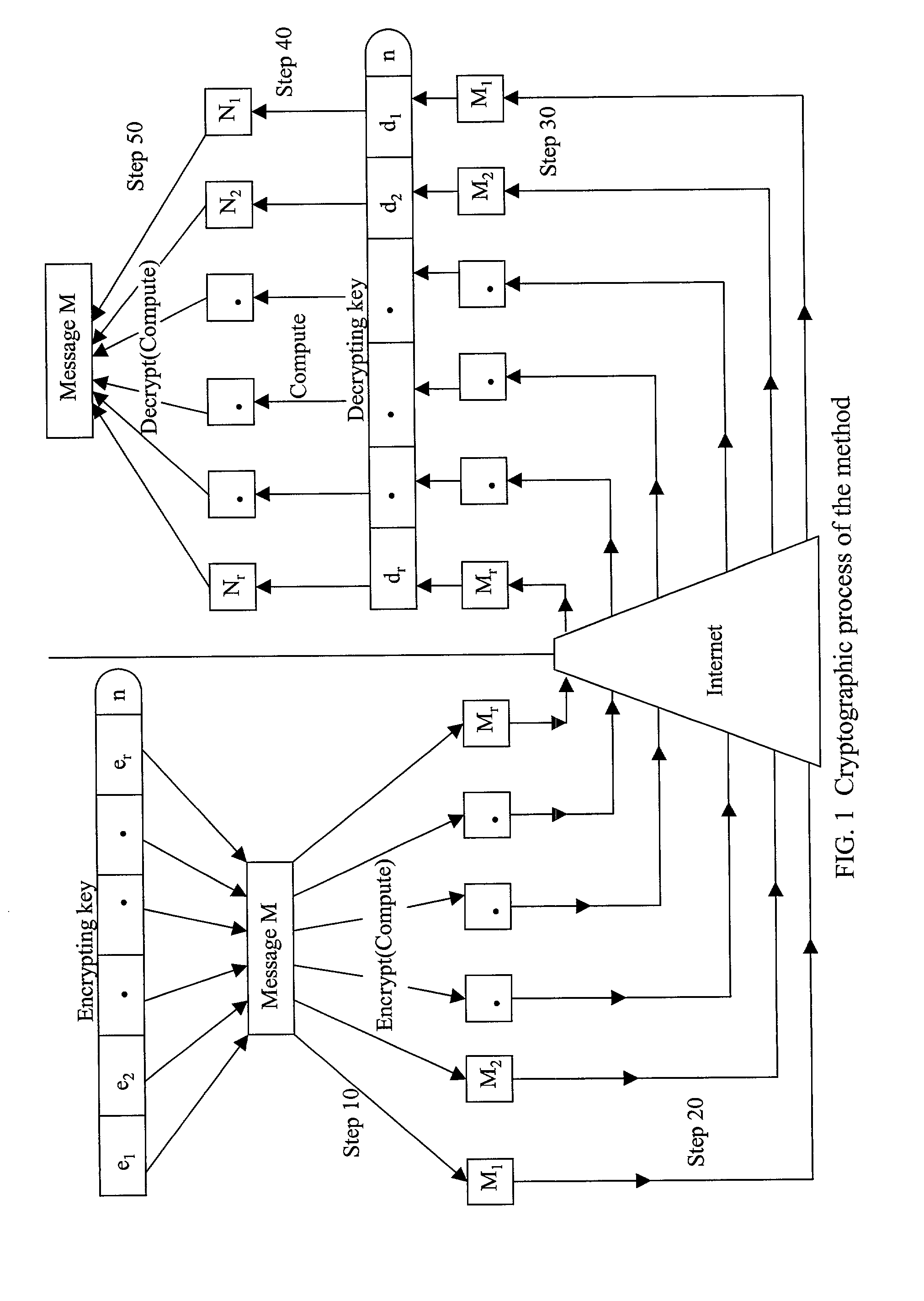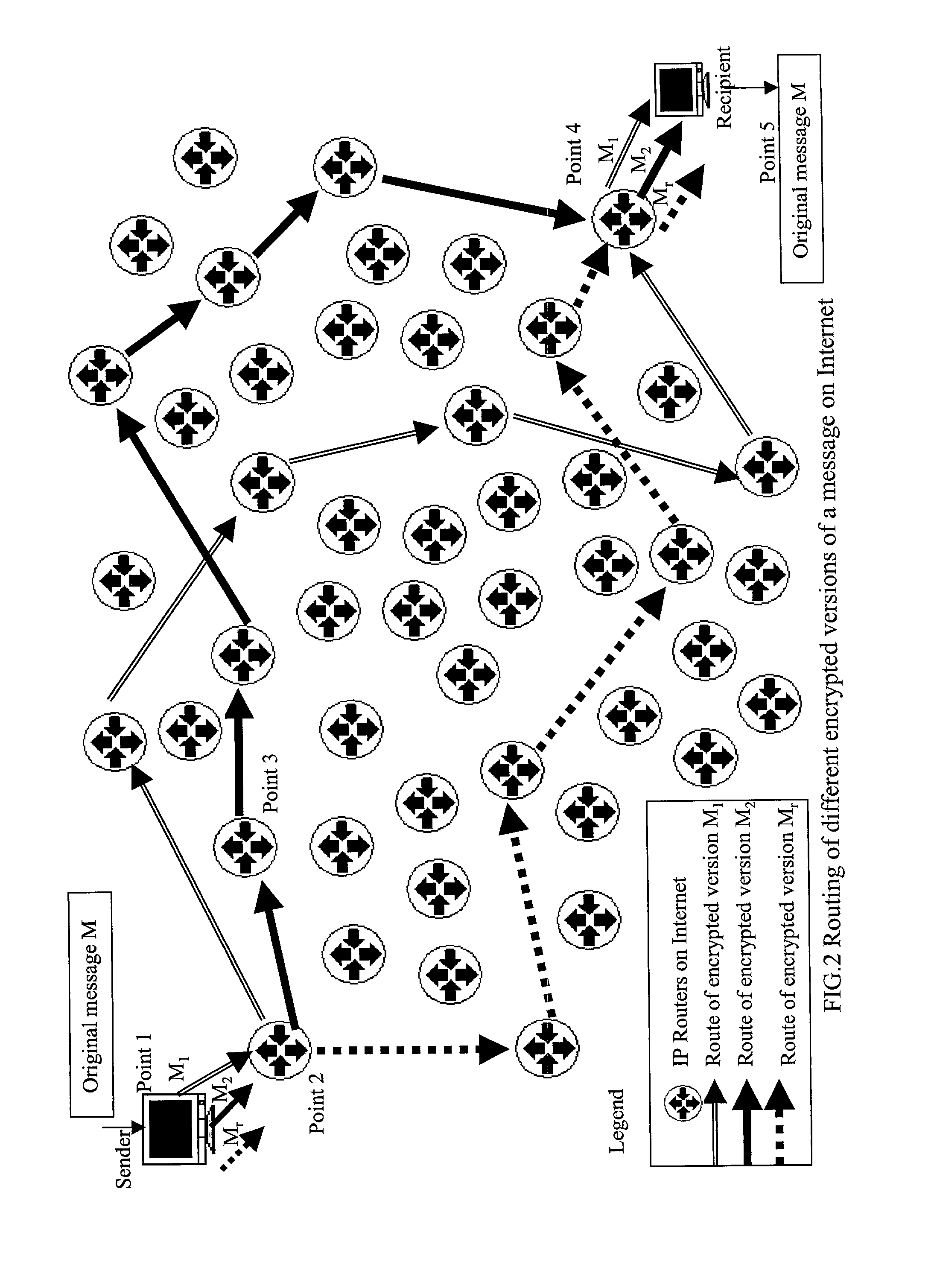Absolute public key cryptographic system and method surviving private-key compromise with other advantages
- Summary
- Abstract
- Description
- Claims
- Application Information
AI Technical Summary
Benefits of technology
Problems solved by technology
Method used
Image
Examples
Example
[0142] U.S. Pat. No. 6,081,598 Cryptographic system and method with fast decryption Dai
[0143] U.S. Pat. No. 4,405,829 Cryptographic communications system and method Rivest, et al
REFERENCES--OTHERS
[0144] "Cryptography And Network Security, Principles and Practice", William Stallings, Prentice Hall, Second Edition.
[0145] "Data Security", Janet Endrijonas. Prima Publishing.,1998.
[0146] "Digital Money, The new era of Internet commerce", Daniel C. Lynch, Leslie Lundquist. John Wiley & Sons, Inc., 1996.
[0147] "TCP / IP--Network Administration", Craig Hunt, O'Reilly & Associates, Inc., 1993.
[0148] "Smart Cards". Henry Dreifus, J. Thomas Monk., John Wiley & Sons, Inc, 1998.
[0149] "Current Public-Key Cryptographic Systems". Available from http: / / www.certicom.com / resources / download / EccWhite2.zip, pages 7-8.
[0150] "Lesson 35: Routing Protocols". Available from http: / / www.networkmagazine.com / static / tutorial / internetworking / 9106tut.ht-m.
[0151] "Source Address Spoofing". Available from http: / / www.n...
PUM
 Login to View More
Login to View More Abstract
Description
Claims
Application Information
 Login to View More
Login to View More - R&D
- Intellectual Property
- Life Sciences
- Materials
- Tech Scout
- Unparalleled Data Quality
- Higher Quality Content
- 60% Fewer Hallucinations
Browse by: Latest US Patents, China's latest patents, Technical Efficacy Thesaurus, Application Domain, Technology Topic, Popular Technical Reports.
© 2025 PatSnap. All rights reserved.Legal|Privacy policy|Modern Slavery Act Transparency Statement|Sitemap|About US| Contact US: help@patsnap.com



